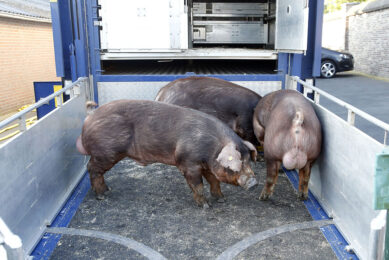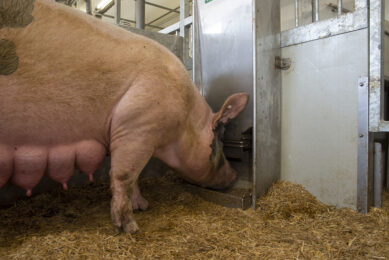ISU opens house for sow lameness research
As from this week, fourteen sows will populate a newly developed sow house at Iowa State University (ISU), in Ames, Iowa, USA. The new facility has been created to better conduct research into lameness in sows.
Several recent reviews have shown that lameness is one of the top causes for failure of reproduction in sows, Locke Karriker said, assistant professor swine production medicine at Iowa State University, and principal investigator in this research.
As management systems allowing gestating sows some walking space are increasingly encouraged in the US and Canada, as in Europe, lameness is only likely to cause more problems.
Project
The US$97,000 project, sponsored by the National Pork Board (NPB), the Iowa Pork Producers Association (ISSA) and a Miller Grant and a part of the university’s Sow Lifetime Longevity programme, is aimed to develop a model to find out more about lameness and sow walking patterns.
“We plan to induce chemical lameness in these sows,” Karriker explained. “This will last for approximately seven days, then the lameness will disappear. This way the animals can be used again.” He will conduct the research together with other scientists at Iowa State University and Kansas State University.
Transformation
The new sow house at the Veterinary College was previously in use for equine research, until very recently. A very rapid transformation followed over the last couple of weeks, making the facility sow-proof and implementing e.g. cameras for 24 hour surveillance and a walking concourse around the stalls, for detecting, scoring and treating lameness in sows.
There are three long term objectives for this study:
• Creating a validated system to assess new drug applications for lameness and pain.
•©Creating a validated system to assess naturally occurring lesions in field settings to determine their contribution to lameness.
•©Developing training tools using video, photos and objective data from lame animals in the current proposal and optimising lameness assessments across the production system.
Related website
• Iowa State University©
 Beheer
Beheer








 WP Admin
WP Admin  Bewerk bericht
Bewerk bericht